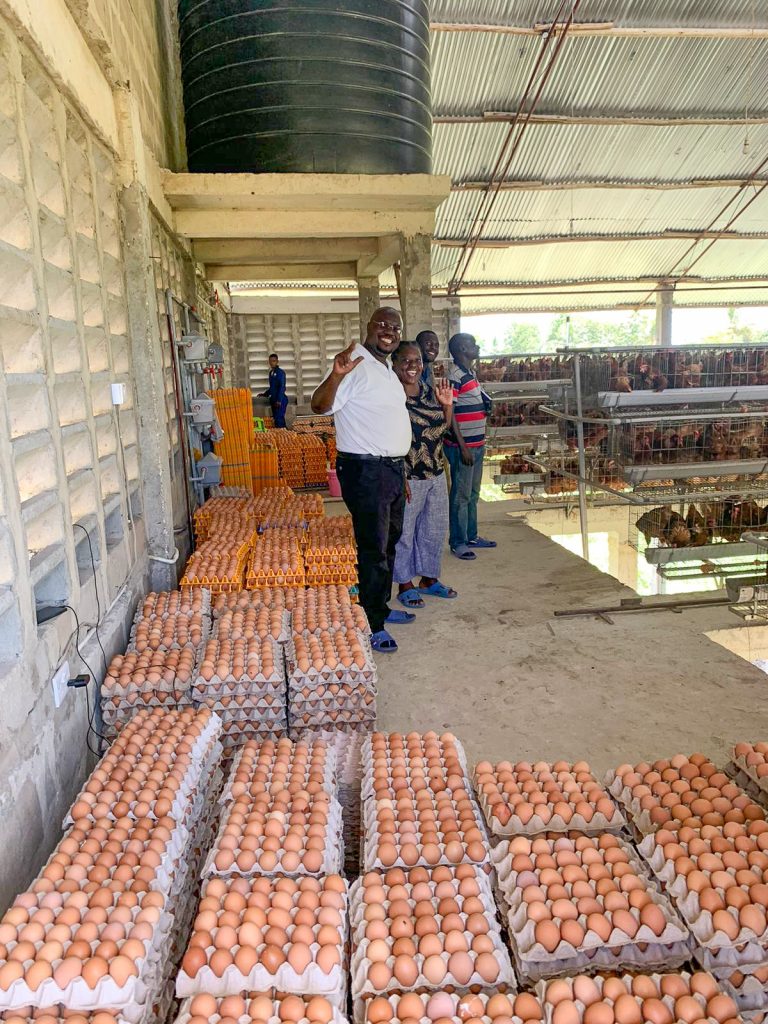What comes first, the chicken or the egg? More applicable to the work of the U.S. Grains Council (USGC), what comes first, the end-use market or the demand for U.S. grains? Programs in Tanzania exemplify how the Council works on both dynamics simultaneously, helping support the growth of commercial poultry producers while helping feed millers learn how to more effectively use grains and co-products in their rations.
“The opportunities for growth in the East African poultry sector are immense,” said Katy Wyatt, USGC manager of global strategies, who traveled this week to meet with poultry and feed producers in Tanzania and Kenya. “The Council is focused on helping develop the capacity of the commercial poultry and feed industry to help address constraints in this industry that are hindering growth.”
Take Ester Makyao, for example. The Council started working with Ester in 2016, when she was a broiler and layer producer. Thanks to support from the U.S. Department of Agriculture’s (USDA’s) Food for Progress (FFP) program and now the USDA Market Access Program (MAP), Ester has switched to only producing layers and growing her farm from 10,000 layers to 32,000 late last year.
Her layers now grow in a newly-constructed, modern poultry house. She employs more than 10 other individuals, who oversee the health and productivity of her flock. The quality of the eggs produced are in high demand in local Dar es Salaam, and she is looking to expand her operation to 64,000 layers to keep up.
Ester is just one of more than 325 poultry and feed producers who attended Council-led training programs across Tanzania in 2019. The Council is seeing significant progress throughout the poultry sector due to these programs, including in improved feed quality, poultry management and feed manufacturing techniques.
This momentum is necessary to help address constraints as demand increases. The market here is predicted to experience unprecedented growth in demand for animal protein; more than 15 percent of the overall demand growth for poultry over the next 20 years will come from Sub-Saharan Africa.
However, significant constraints limit the ability of producers like Ester to capitalize on this demand, the most evident of which is the high cost of feed. Corn is the preferred feed ingredient in Tanzania, but it is also a staple for human consumption unlike in the United States where feed and food corn are handled as separate crops. As a result, any shortage in corn availability directly impacts feed manufacturers, poultry producers and consumers – directing corn to people, not poultry, and driving up prices for all.
“Despite challenges facing the growth of Tanzania’s poultry and feed industries, the Council continues to be invested in supporting these industries to foster growth,” Wyatt said. “These programs remain a critical point of engagement for our mission in East Africa.”
The Council led its first broiler management training program of 2020 last week in Dar es Salaam, with more than 50 broiler producers attending. Organized in partnership with TABROFA (Tanzania Broilers Farmers Association), this program addressed these production obstacles in addition to biosecurity, feed management and record keeping.
With funding from USDA’s Agricultural Trade Promotion (ATP) program, the Council is now looking to broaden this engagement to include feed and livestock producers in Kenya and Ethiopia. This work is key to market development as the agricultural sector in East Africa employs the largest proportion of the region’s workforce.
More than 65 percent of Tanzania’s workers are employed in agriculture with, for example, more than 60 percent of households estimated to be rearing poultry for income. The growth in businesses like Ester’s is enhanced by improved management through the Council’s training programs, demonstrating the key role these programs have in helping producers improve their livelihoods and those of their employees and end-users, who also can purchase quality, trusted poultry products.
“Our East Africa programs present an exciting opportunity for a long-term market for U.S. coarse grains and co-products to tap into,” Wyatt said. “While these opportunities may not be seen in immediate sales, gains – and notable ones – are being made in the region today. We are incredibly proud and energized by our program in the region, which is truly a representation of the Council’s mission of developing markets, enabling trade and improving lives. The momentum here cannot be ignored.”
About The U.S. Grains Council
The U.S. Grains Council develops export markets for U.S. barley, corn, sorghum and related products including distiller’s dried grains with solubles (DDGS) and ethanol. With full-time presence in 28 locations, the Council operates programs in more than 50 countries and the European Union. The Council believes exports are vital to global economic development and to U.S. agriculture’s profitability. Detailed information about the Council and its programs is online at www.grains.org.


